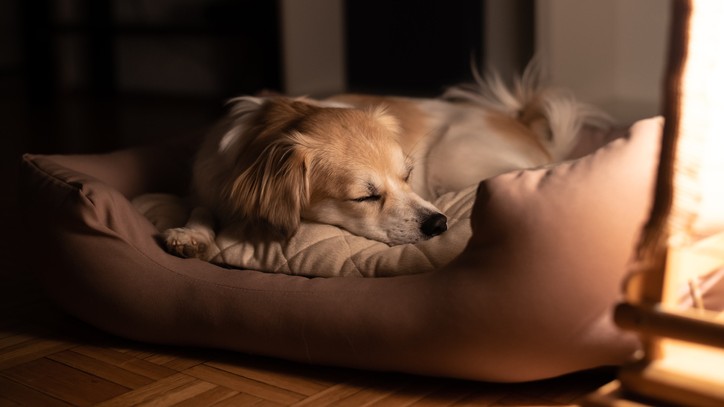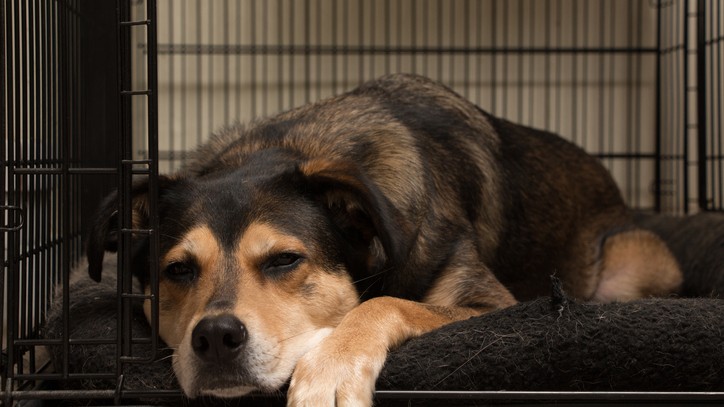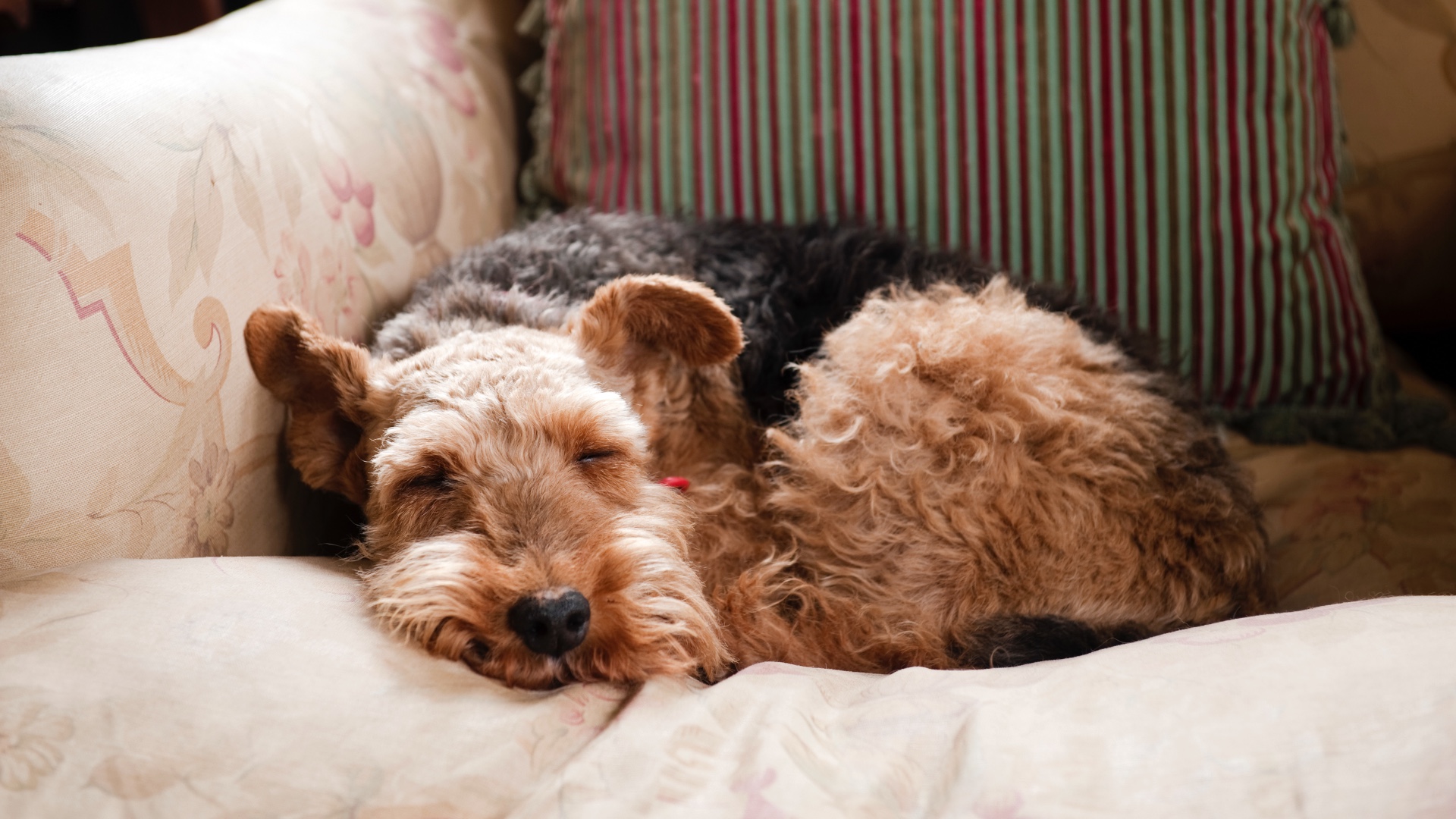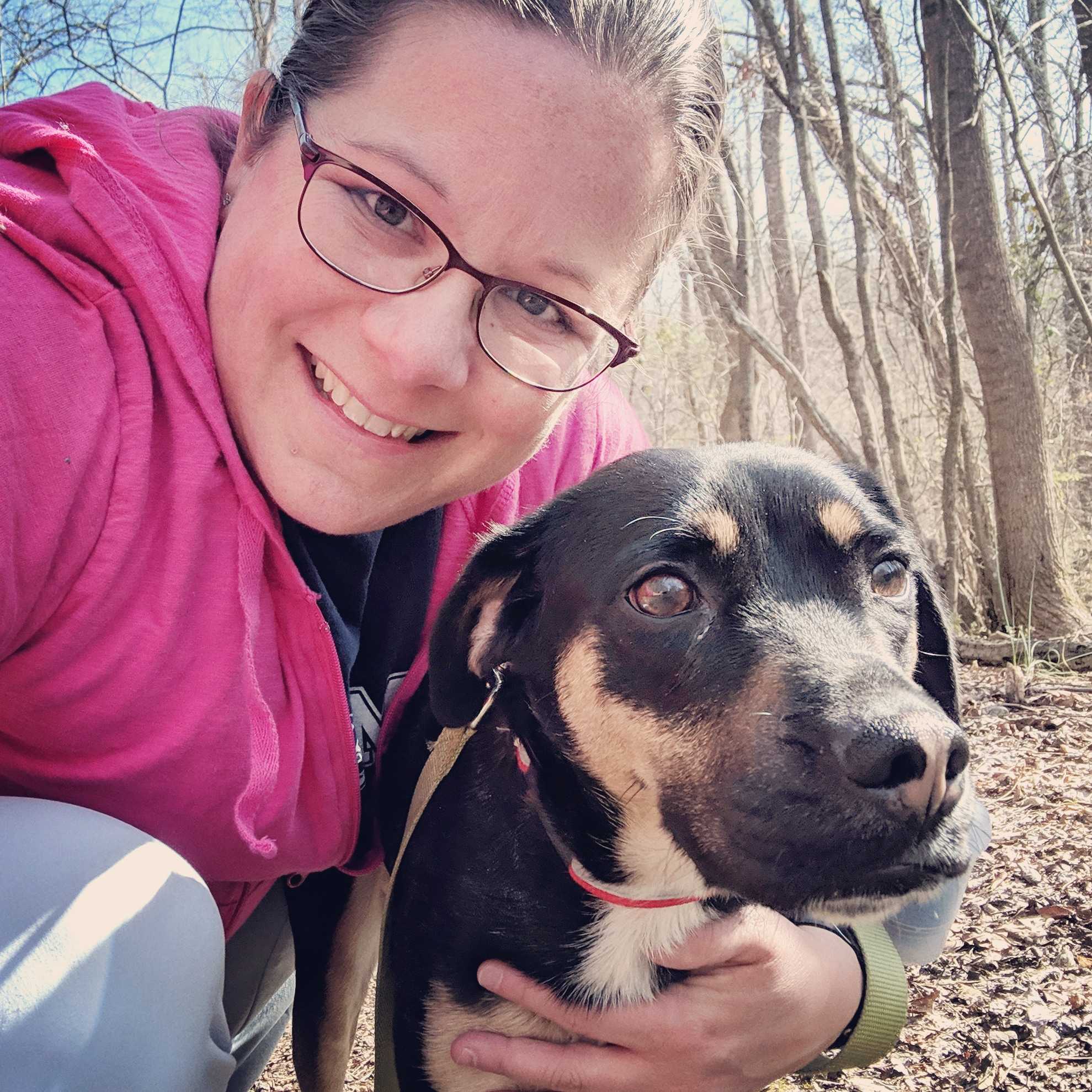A vet's guide on how to get a dog to sleep
Sleep issues aren’t just for puppies; how to get a dog to sleep is something even the owners of an adult dog may wonder about!

How to get a dog to sleep is something you’ve probably wondered about if you’ve ever spent a night lying awake in bed, listening to the clickety-clack of dog toenails on your floors as your dog paces around the house. While some dogs may bark or otherwise be disruptive during the night, even a quiet dog can be a distraction, especially if you’re a light sleeper. So if buying your dog the best dog bed you could find hasn’t helped at all, try reading these five tips for getting your dog to sleep through the night.
1. Ensure that your dog gets plenty of exercise during their waking hours
When it comes to how to get a dog to sleep, the most important thing you can do actually begins early in the day! Just like us, dogs sleep better after a busy, active day. Aim to provide your dog with at least one to two hours of dog exercise, each and every day. This exercise might take the form of a couple of long walks around the neighborhood or a high-intensity indoor game for dogs, depending on your dog’s personality and health status. Regardless of the form of exercise you choose, the important thing is to ensure that your dog is tired by the end of the day.
Many of our dogs spend their day at home alone while we’re at work or school. This often means that dogs spend much of the day sleeping, which makes it unsurprising that they’re full of energy at night! If this is the case for you, see if you can find a dog walker or a pet-loving neighbor who will provide your dog with some interaction and exercise during the day. If this isn’t possible, focus on providing your dog with a lengthy walk before and after work every day.
2. Take your dog outside to eliminate right before bedtime
Nighttime restlessness can be a sign that your dog needs to go outside to urinate or defecate. A healthy adult dog should be able to hold their urine and stool through the night, so if your dog is routinely asking to go outside and you have ruled out medical problems (such as diarrhea or a urinary tract infection), it might help to ensure that your dog empties his bladder and bowels just before bedtime.
3. Establish a consistent bedtime routine for your dog.
Like many humans, dogs are creatures of habit. If you begin following a predictable bedtime routine, your dog will probably learn that routine quickly and embrace it! Begin by adding a bit more structure to your own bedtime routine, then incorporate your dog into that routine.
For the last several years, I’ve put my dog in his crate at bedtime. I give him a treat as a reward for getting in his crate and that is the very last thing before I crawl into bed at night. Now that he has learned the routine, my dog hops in his crate voluntarily to wait for his treat as soon as he sees me brush my teeth at night. He knows the next step in the routine is me telling him to “go night night” and giving him a treat, so he’s ready and waiting! If you don't yet have a crate there’s a good selection on offer in our guide to the best dog crates.

4. Give your dog a comfortable place to sleep, preferably in a crate
If your dog is restless during the night, it could be that he or she is having a hard time getting comfortable. Ensure that your dog has a set sleeping spot. For most dogs, a crate serves the purpose perfectly. Being confined to a crate will help your dog resist the temptation to roam the house, look out the windows, and investigate every little sound. Additionally, most dogs quickly embrace a crate as their “den”, and feel comfortable within their crate.
PetsRadar Newsletter
Get the best advice, tips and top tech for your beloved Pets
Be sure there’s a soft, comfy dog bed in the crate that’s appropriate for your dog and make sure you know how to choose the right size dog bed. If your dog is young and destructive, look for something durable that your dog is unlikely to shred. If your dog is older, perhaps look at getting the best orthopedic dog bed you can find to help minimize joint discomfort during the night. In addition to a comfy bed, it’s also important to make sure that the bed or crate is large enough for your dog to sleep comfortably. Owners of larger breeds might find our round-up of the best large dog beds a helpful resource.
5. Visit your veterinarian to rule out medical issues.
In some cases, there may be medical causes for your dog’s nighttime restlessness. Perhaps your dog needs to go out more often, due to a urinary or gastrointestinal issue. Maybe arthritis, intervertebral disk disease, or some other cause of pain is making it challenging for your dog to get comfortable. In some cases, older dogs experience cognitive dysfunction that causes their sleep/wake cycles to become confused.
If changes to your routine do not help your dog rest, or if the onset of sleep difficulties is relatively sudden or recent, schedule an appointment with your veterinarian to help you rule out medical causes. Your veterinarian will begin by collecting thorough history, asking questions about your dog’s sleep issues such as when you first noticed them, whether you have observed any specific triggers, and any other information that you can provide. Next, your veterinarian will perform a thorough physical exam, looking for evidence of pain or disease. Finally, your veterinarian may recommend laboratory testing (such as blood tests, a urinalysis, and/or fecal parasite testing). This workup will help your veterinarian determine whether there may be an underlying condition that is causing your pet’s evening waking.
What can I give my dog to sleep at night?

Melatonin is a commonly-used sleep aid in humans, which can also be used in dogs. Melatonin has also been used to treat a number of canine medical conditions, including coat disorders and age-related cognitive dysfunction.
Melatonin in dogs seems to have a low risk of side effects, although there has been limited research on its use in this species. Avoid using melatonin in puppies, pregnant dogs, and dogs with neurologic or liver disease, because there may be an increased risk of side effects. Melatonin may enhance the side effects of some medications, due to drug interactions. Talk to your veterinarian before administering melatonin, to determine whether it is a good option for your dog.
Depending on the cause of your pet’s night waking, your veterinarian may also be able to recommend other prescription medications or nutritional supplements that can help you and your dog get a good night’s sleep.
How to massage a dog to sleep
In some cases, a highly energetic dog may need help settling down for the night. A gentle massage can be a valuable sleep aid in these high-energy dogs.
When massaging your dog, it’s important to keep the interaction calm. Use a soft, low tone of voice, instead of the high-pitched voice or “baby talk” that you may use with your dog in other contexts.
Get your dog to settle or lay down in their sleeping spot (on their dog bed, in your bed, etc.) and begin by calmly petting your dog. Use long, gentle strokes down the side of your dog’s face and body. Rub your dog’s chest gently, if they enjoy that. Finally, many dogs enjoy having their ears massaged as part of a soothing evening routine. Pay close attention to your dog’s body language, avoiding touch that your dog finds annoying and focusing on those that seem to help your dog become calm and relaxed.
Getting a good night’s sleep is not impossible!
Figuring out how to get a dog to sleep can be a challenge. In general, your best approach is to ensure that your dog has plenty of exercise and opportunities to eliminate during his waking hours, as well as a reassuring bedtime routine and a comfy place to sleep at night. If your dog’s sleep issues develop suddenly, however, it’s important to consider that there may be a medical cause. Schedule an appointment for a veterinary exam to rule out medical problems, then work on creating a routine that supports good sleep habits for your dog.
If you want to learn how to stop your puppy crying at night, check out this feature.
Dr. Barnette is a graduate of the University of Florida, where she received both her B.S. in Zoology and her Doctor of Veterinary Medicine (DVM). She has 15 years of clinical experience as a small animal veterinarian, treating dogs, cats, and occasional exotic patients. She now works as a freelance veterinary writer, creating educational content for veterinarians, veterinary team members, and dedicated pet owners. Dr. Barnette lives in southwest Florida with her husband and daughter (plus two cats, a dog, and a rescued dove!) and enjoys kayaking, biking, and hiking. Learn more about Dr. Barnette at www.linkedin.com/in/catherinebarnette.

